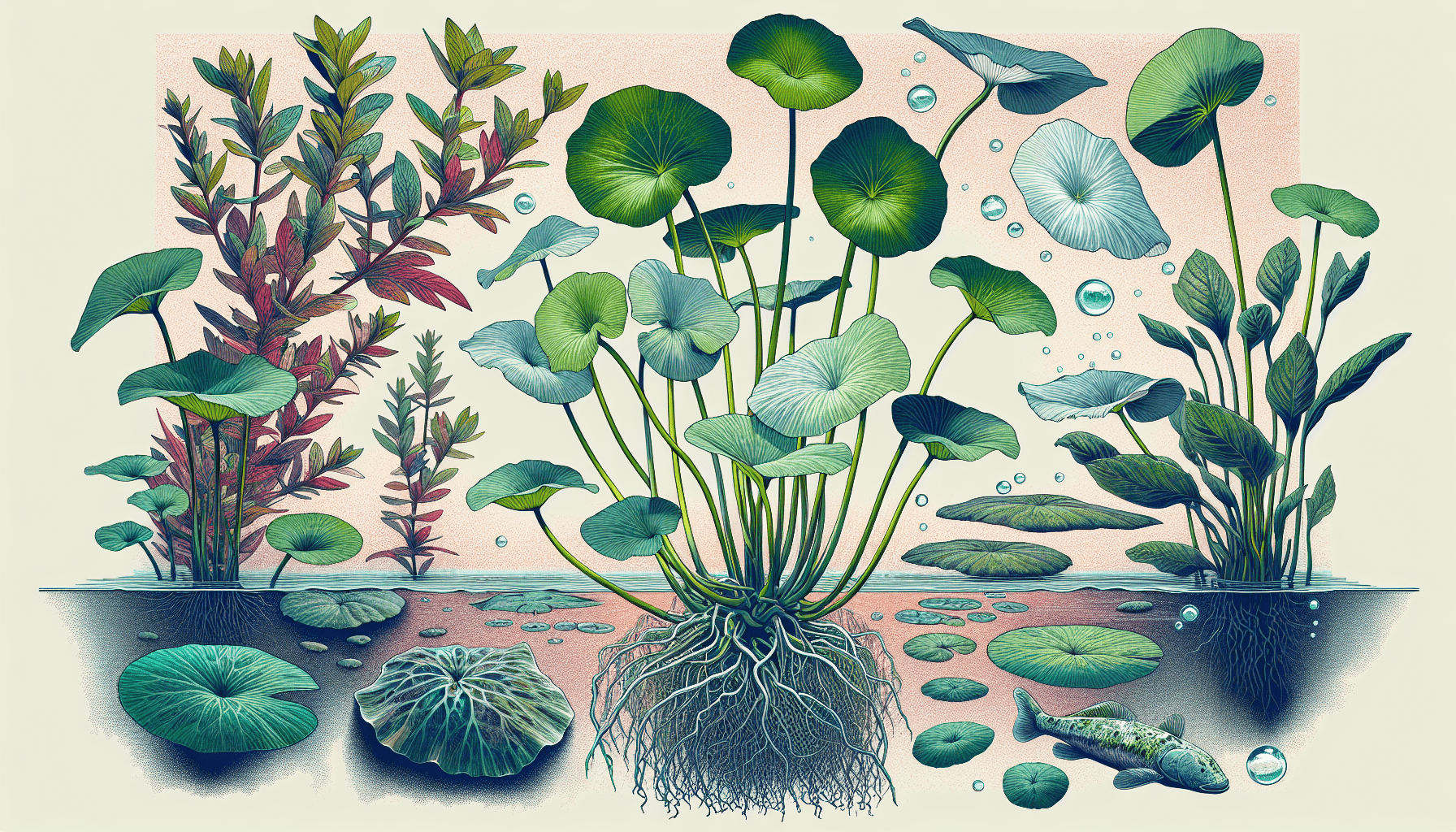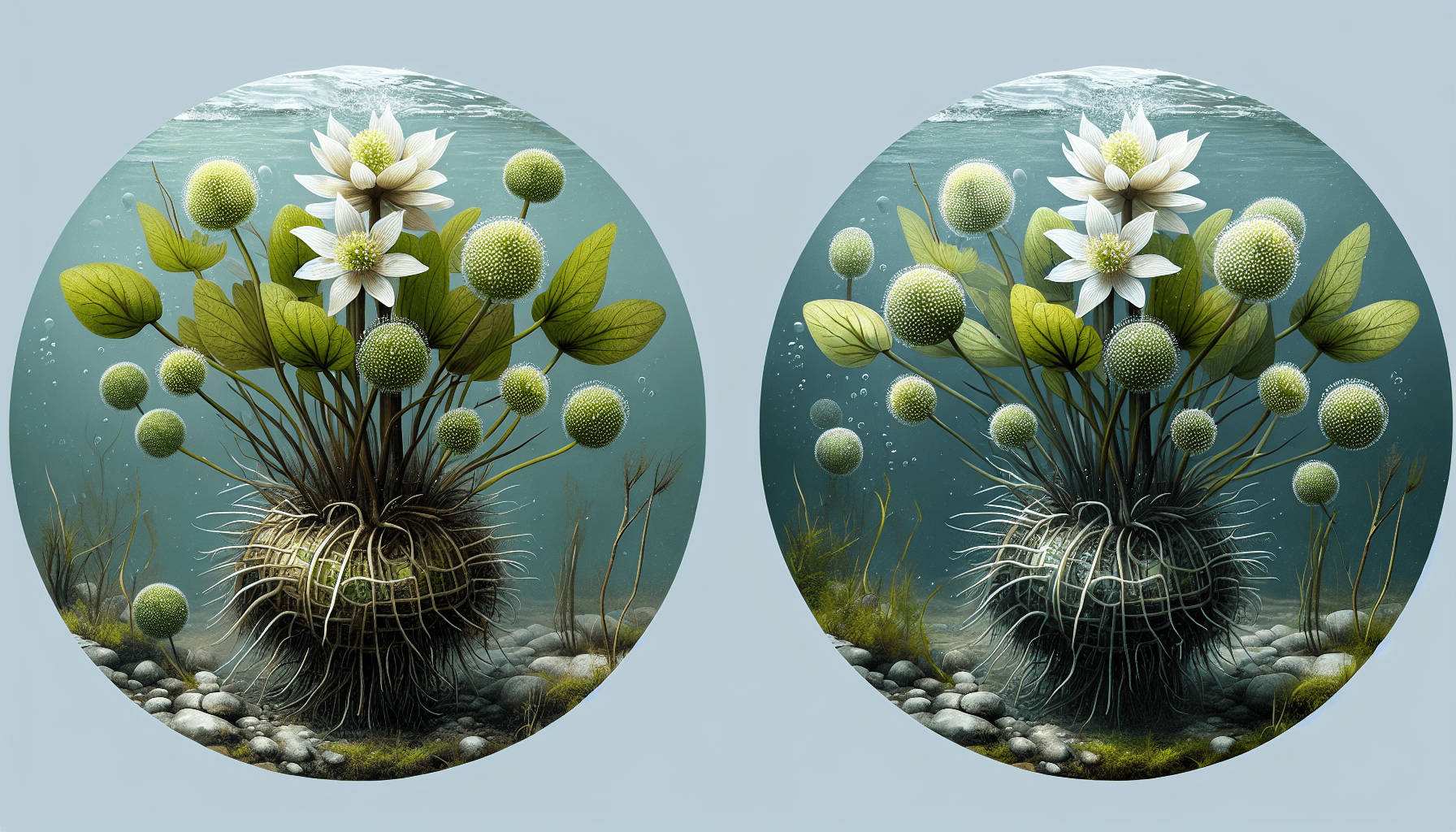As the exquisite landscapes of aquatic environs enthral a multitude of aquatic botanists globally, there exists a verdant gem: Echinodorus Palifolius, an intriguing aquatic weed. You might find this article enlightening, as it encompasses an in-depth discussion of this aquatic weed, starting from its versatile scientific characteristics, its interesting growth mechanisms, and its unique environmental significance. Unveiling mysteries harbored by freshwater habitats, here begins your comprehensive guide to understanding the enigmatic world of Echinodorus Palifolius.

Scientific classification of Echinodorus Palifolius
Echinodorus Palifolius, known commonly as the “Amazon Swordplant,” is a member of the illustrious and diverse kingdom of Plantae. Like all other plants, it falls under the ‘Eukaryota’ domain, distinguished by the presence of cells with nuclei.
Kingdom, Phylum, Class
In terms of more specific taxonomic identification, Echinodorus Palifolius belongs to the phylum ‘Tracheophyta’, also known as vascular plants. This phylum includes plants that have a specialized system for transporting nutrients and water. The plant is classified further into the class of ‘Magnoliopsida,’ denoting its distinct characteristic as a flowering plant.
Order, Family, Genus
Refining down the classification ladder, Echinodorus Palifolius belongs to the order ‘Alismatales,’ a group known for its members’ aquatic or semi-aquatic nature. It falls within the family ‘Alismataceae,’ also known as the water-plantain family, famous for its aquatic and marshy habitat. Finally, the genus ‘Echinodorus’ is this plant’s immediate taxonomical class, including roughly 30 species of aquatic plants originating from the Americas.
Species description
Echinodorus Palifolius, specifically, is characterized by having elongated, slender, and cordate (heart-shaped) leaves. These leaves are typically green but can sometimes adopt a dark reddish tint. The plant can grow quite tall, measuring up to 40 cm in height and spreads through rhizomes.
Origins and habitat of Echinodorus Palifolius
Echinodorus Palifolius is an aquatic plant species native to the Americas, framing the Amazon basin running from Brazil to Peru. Unsurprisingly, it is fond of wet locales including marshes, river banks, and shallow bodies of water.
Geographical distribution
Globally, due to its popularity among aquarists and landscape designers, Echinodorus Palifolius can now be found many regions outside its native America, from Asia to Australia. Still, it thrives best in the warm and tropical conditions of its native lands.
Preferred water conditions
True to its origins, Echinodorus Palifolius prefers soft and slightly acidic water conditions. The ideal temperature ranges between 22 to 28 degrees Celsius. Like all plants, it requires light for photosynthesis. Hence, it thrives best in well-lit conditions, although it can tolerate semi-shaded areas.
Tender and hardy varieties
There are both tender and hardy varieties of Echinodorus Palifolius. The tender varieties favor warmer, tropical environments, while hardy varieties can cope with cooler conditions. Regardless of the variety, the plant’s overall care requirements remain largely the same.
Appearance and Identification of Echinodorus Palifolius
Morphological features
Echinodorus Palifolius has elongated, spear-shaped leaves, which are generally green – occasionally verging on a deep red tinge. The leaves are born from a central rosette, with visibly veined patterns and a glossy texture.
Growth pattern
The plant grows from an adventitious root system and uses a spreading rhizome. The leaves emerge from this central point, growing upwards and outwards. It can reach a height of approximately 40 cm.
Coloration
The color of Echinodorus Palifolius leaves depends on several factors, including light access and nutrient availability. In optimal conditions, the leaves are a rich green color, though they can sometimes take on a darker, reddish tint.
Seasonal changes
Seasonal changes are not overly apparent in Echinodorus Palifolius due to its tropical origin and thus, relatively stable conditions. However, like any plant, it may respond to changes in temperature, light, and nutrient availability throughout the year.

Propagation of Echinodorus Palifolius
Natural Reproduction
Echinodorus Palifolius reproduces vegetatively through its rhizomes. It is also capable of sexual reproduction via flowers, though this is less common in the aquarium setting.
Artificial propagation
For artificial propagation, a method called ‘splitting’ can be used. This involves physically dividing the plant’s rhizomes, ensuring each section has its own root system, then replanting them separately.
Growth speed and maturity
The growth speed of Echinodorus Palifolius can be relatively swift under optimal conditions. The time it takes to reach maturity varies depending on several factors, such as the nutrient availability, the quality of light, and the overall health of the plant.
Role in aquatic ecology
Importance in food chain
Echinodorus Palifolius forms part of the primary producers in the aquatic food web. Many aquatic creatures, including certain species of fish and invertebrates, use it as a food source.
Interactions with other life forms
Apart from its role in nourishment, Echinodorus Palifolius also offers shelter to these aquatic creatures. The dense foliage can house many microorganisms, thereby maintaining biodiversity in the ecosystem.
Impact on water quality
The plant helps improve water quality by absorbing excess nutrients, which can otherwise lead to issues like algae blooms.
Uses of Echinodorus Palifolius
Aquarium use
Echinodorus Palifolius is a popular choice in aquariums for its attractive, tall leaves and simple care requirements. It adds aesthetic value while providing shelter and oxygen for the aquarium’s inhabitants.
Landscaping applications
This plant is also used in aquatic gardening and is often incorporated into ponds and water features for its dense and striking foliage.
Research and medicinal prospects
While not a significant focus of research currently, the medicinal prospects for Echinodorus Palifolius should not be overlooked. Many plants from the Alismataceae family have been used in traditional medicine.
Potential hazards and issues
Invasive potential
Due to its fast growth rate and easy propagation, Echinodorus Palifolius has the potential to become invasive in certain regions. This can cause issues with biodiversity and water quality.
Management and control methods
To counter the invasiveness, management measures are necessary. These include monitoring new plantations, employing mechanical removal methods, or using plant-specific pesticides in severe cases.
Efforts to prevent spread
Preventive measures include adopting careful planting strategies, such as avoiding areas with flowing water that can carry the plant to new locations.
Cultivation and care of Echinodorus Palifolius
Ideal growing conditions
As mentioned, Echinodorus Palifolius thrives best in slightly acidic, soft water conditions. It should be situated in areas with good light access for optimal photosynthesis.
Common diseases and pests
Common issues with Echinodorus Palifolius include nutrient deficiencies, manifesting as discoloration or stunted growth. It can also be affected by pest infestations like snails.
Tips for successful cultivation
Nutrient-rich substrate, appropriate lighting, and consistent water conditions are keys to successful cultivation of Echinodorus Palifolius.
Legal and trade aspects of Echinodorus Palifolius
Regulation in different countries
Given the potential invasive character, some countries regulate the trade and cultivation of Echinodorus Palifolius. Always check local regulations before planting or trading this species.
Local and global trade
Despite potential limitations, the plant has a thriving local and global trade due to its desirability in aquatic décor.
Ethics of cultivation and trade
It’s essential to balance the demand for Echinodorus Palifolius against the risks posed to natural aquatic habitats. Responsible cultivation and trade practices ensure sustainability.
Future of Echinodorus Palifolius
Ongoing research and findings
Research into this species and potential applications in various fields like medicine is ongoing, and future findings could provide more insight into its benefits and potential hazards.
Potential uses in the future
While currently used mainly for aesthetic purposes, Echinodorus Palifolius may have untapped potential in other areas, such as phytoremediation or medicine.
Conservation status and efforts
Currently, Echinodorus Palifolius is not under any significant threat and does not require active conservation efforts. However, careful monitoring is required to prevent it from becoming a threat to biodiversity in new locations.